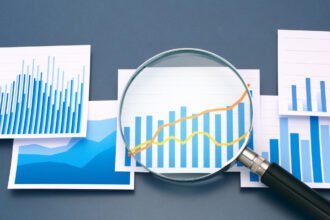There’s been an growing discussion over the past couple of years on the topic of Big Data: how to deal with the situation when you have more data than can be conveniently managed and analyzed by traditional software tools. But Big Data has little intrinsic value in its own right: its value is only realized when you can deploy analytical expertise to draw actionable information from the data.
There’s been an growing discussion over the past couple of years on the topic of Big Data: how to deal with the situation when you have more data than can be conveniently managed and analyzed by traditional software tools. But Big Data has little intrinsic value in its own right: its value is only realized when you can deploy analytical expertise to draw actionable information from the data. Dion Hinchcliffe at ZDNet aptly calls this “closing the clue gap“:
As accumulated information has become a top-line asset in large companies, the ability to tap into it and release value from it is not growing to match in most traditional firms. Yet this information is currently growing exponentially and becoming a challenge in its own right. … Smart organizations can apply Big Data methods to solve existing business problems, implement new business models, and drive growth in innovative new ways. That is, if they can find a way to move beyond their parochial ways.
Tim O’Reilly put it more succinctly, with this quote (which inspired Hinchcliffe’s article):
Companies that have massive amounts of data without massive amounts of clue are going to be displaced by startups that have less data but more clue.
Our take is that the “clue” comes from the expertise of data scientists, who can apply the methods of statistical analysis and predictive analytics to create value from Big Data. We call this Big Analytics. In a new white paper, Revolution Analytics’ CEO Norman Nie explores how statistical analysis techniques are critical to deriving value from Big Data, by allowing analysts to:
- Deal with a non-linear world, and move beyond the linear approximation with advanced software tools like the R language
- Create powerful models and predictions with data mining
- Detect and capitalize on rare events
- Extracting and analyze ‘low incidence populations’
- Address the conundrum of ‘statistical significance’ in Big Data
Dr. Nie introduces the white paper as follows:
The enormous growth in the amount of data that the global economy now generates has been well documented, but the magnitude of its potential impact to drive competitive advantage has not. It is my hope that this briefing urges all stakeholders—executives who must fund analytics initiatives, IT teams that support them and data scientists, who uncover and communicate meaningful insight—to go boldly in the direction of “Big Analytics.” This opportunity is enormous and without precedent.
The white paper is available for download now (with free registration) from the link below.
Revolution Analytics: The Rise of Big Data Spurs a Revolution in Big Analytics









